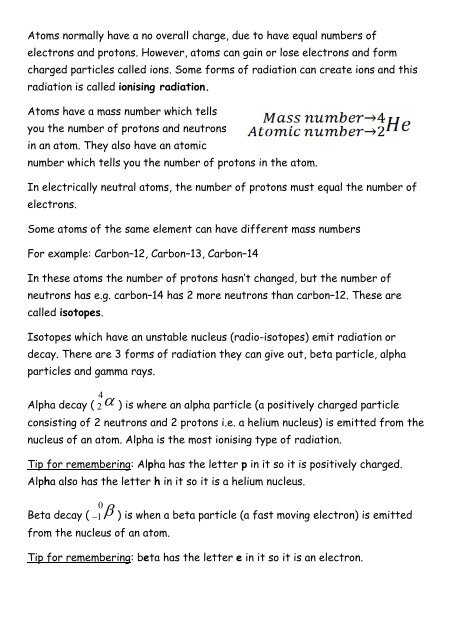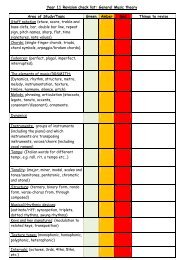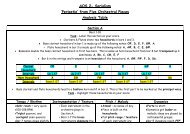Physics Unit 2 Revision (Higher tier)
Physics Unit 2 Revision (Higher tier)
Physics Unit 2 Revision (Higher tier)
Create successful ePaper yourself
Turn your PDF publications into a flip-book with our unique Google optimized e-Paper software.
Atoms normally have a no overall charge, due to have equal numbers ofelectrons and protons. However, atoms can gain or lose electrons and formcharged particles called ions. Some forms of radiation can create ions and thisradiation is called ionising radiation.Atoms have a mass number which tellsyou the number of protons and neutronsin an atom. They also have an atomicnumber which tells you the number of protons in the atom.In electrically neutral atoms, the number of protons must equal the number ofelectrons.Some atoms of the same element can have different mass numbersFor example: Carbon–12, Carbon–13, Carbon–14In these atoms the number of protons hasn’t changed, but the number ofneutrons has e.g. carbon–14 has 2 more neutrons than carbon–12. These arecalled isotopes.Isotopes which have an unstable nucleus (radio-isotopes) emit radiation ordecay. There are 3 forms of radiation they can give out, beta particle, alphaparticles and gamma rays.Alpha decay (4 2 ) is where an alpha particle (a positively charged particleconsisting of 2 neutrons and 2 protons i.e. a helium nucleus) is emitted from thenucleus of an atom. Alpha is the most ionising type of radiation.Tip for remembering: Alpha has the letter p in it so it is positively charged.Alpha also has the letter h in it so it is a helium nucleus.Beta decay (0 1 from the nucleus of an atom.) is when a beta particle (a fast moving electron) is emittedTip for remembering: beta has the letter e in it so it is an electron.
















